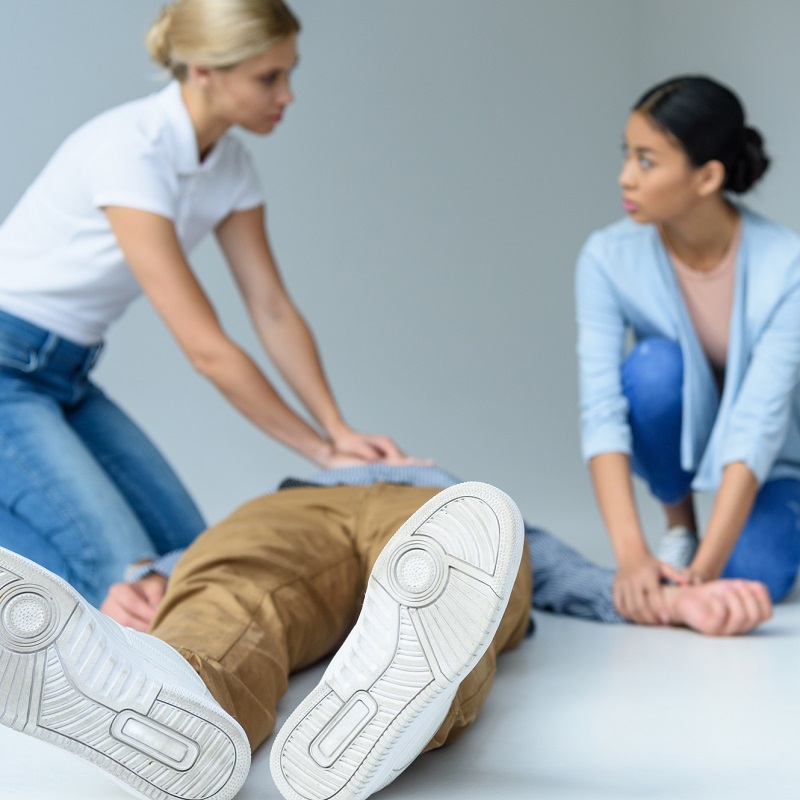CPR is a relatively simple technique and the go-to emergency procedure for someone whose heart has stopped beating. Midfielder Christian Eriksen was given lifesaving CPR on the pitch after collapsing during the Denmark vs Finland match at Euro 2020. CPR has the potential to keep the person alive long enough to receive professional medical attention.
You never know when you may need to intervene and help save a life. You don’t need to be a health professional to gain expertise in this medical intervention, which is quick to learn and execute. There is no good reason for anyone not to learn how to do CPR.
Why learn CPR?
Without oxygen, the brain can only survive five minutes, on average, before being permanently damaged. CPR can dramatically improve someone’s chances of making a full recovery.
It is one of the simpler things you can learn and make a real difference in an emergency.
When is CPR necessary?
CPR can be used in many different emergencies. We have all seen in TV shows or movies the dramatic representation of CPR saving someone’s life. There are hundreds of situations where timely CPR can mean the difference between life and death.
For instance, a massive heart attack rendering a person incapable of breathing. The whole point is to keep oxygen flowing long enough for professional help to be obtained.
A reminder of how to do CPR
With the risk of COVID-19, it is advised to perform hands-only CPR and not give rescue breaths. This process still increases the person’s chance of surviving.
To perform hands-only CPR all you need to do is:
- Place a piece of clothing or a towel over the person’s mouth and nose to reduce the possible risk of infection
- Place your hand on the breastbone and your other hand on top with your fingers interlocked
- Push straight down, about 5cm (2 inches) and release
- Repeat the compressions at a rate of 100 to 120 times a minute. Thinking of the music ‘Staying Alive’ by the Bee Gees and performing compressions on the beat can assist in keeping the correct rhythm.
You can do hands-only CPR until an ambulance arrives. Before COVID-19 you would usually give chest compressions with rescue breaths. After every 30 chest compressions, you give two rescue breaths.
What is a defibrillator?
A defibrillator is a device that gives a high energy electric shock to the heart of someone who is in cardiac arrest.
The chances of survival of cardiac arrest increase from 6% to 74% when you use a defibrillator within 3-5 minutes of someone going into cardiac arrest.
Moreover, if a defibrillator is available, anyone can use one without training. In fact, many public buildings now contain one. Most shopping centres, train stations, and other public buildings now have Public Access Defibrillator (PAD) or Automated External Defibrillators (AEDs).
They are very easy to use and give automated instructions to the user.
Our very own Newcross Healthcare hero
Newcross Healthcare nurses and carers usually provide care when on duty, but sometimes their expertise is called upon when they are least expecting it. That is what happened to Norma Malpass, Registered Nurse (RN) from our Cannock Branch, one Saturday night when her training and quick thinking helped save a life.
While driving home, Norma noticed something was happening on the side of the road with people huddled over an unconscious person lying on the ground. Immediately, Norma pulled over and went to see if she could assist. Norma identified herself as a nurse and quickly established that they were not breathing and had no pulse. She directed the others to help, and with their assistance, she began performing vital CPR.
Norma relied on her first aid skills, and after an agonising period, Norma gained a faint pulse, which persisted for a short time before fading again. Then, with assistance from the onlookers, she continued the lifesaving CPR and once again regained a pulse. With continued effort, the person began breathing. Norma continued monitoring and care for the person until the ambulance arrived.
Norma managed to save the person’s life, giving them a second chance. Without Norma, they might not be here today.
“I think this incident illustrates the value of training, particularly with vital first aid skills,” said Mark Story, Head of Learning & Development. “We deliver hundreds of courses to healthcare workers every month, and CPR is unquestionably one of the most valuable.”
What to do in a similar situation?
Use “Doctor ABCD” to help you remember the first letter of each of these crucial steps:
- Dangers? – Check for danger
- Response? – Look for a response.
- Airway – Check the airway for foreign materials.
- Breathing? – Check for breathing
- CPR – Start CPR
- Defibrillation – Apply defibrillator
Above all, if you use the phrase “Doctor ABCD”, your quick action could save a life!
For more first aid tips, take a look at our blog.











